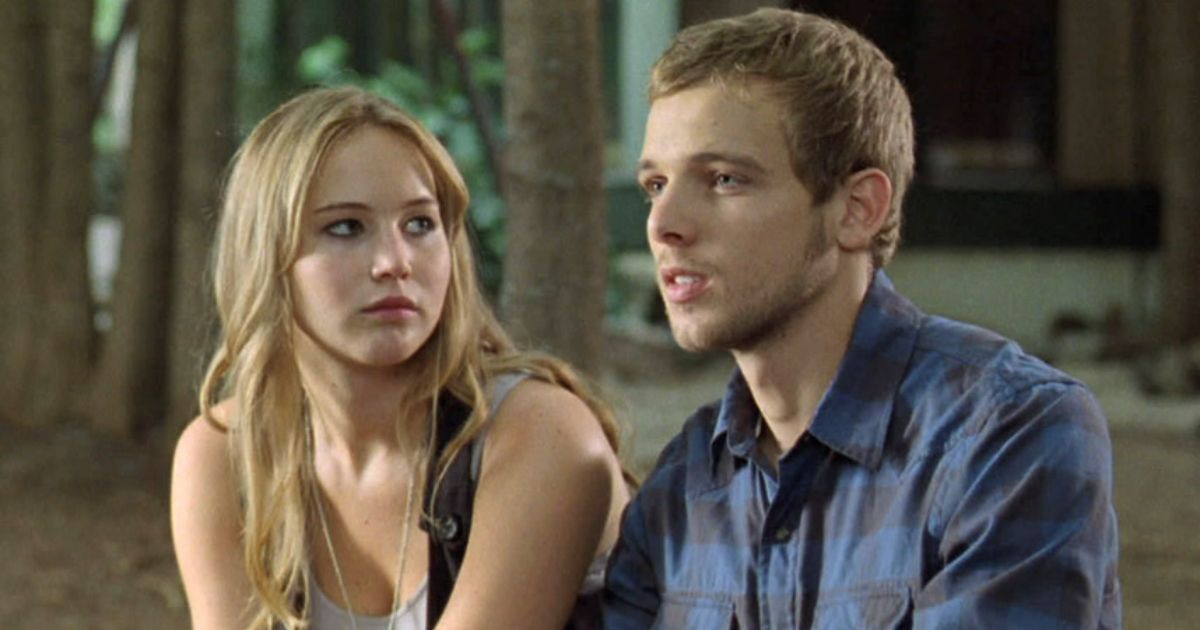House at the End of the Street
House at the End of the Street (2012) is a psychological thriller directed by Mark Tonderai and starring Jennifer Lawrence, Max Thieriot, and Elisabeth Shue. Blending suburban drama with elements of horror and suspense, the film aims to explore isolation, trauma, and hidden dangers beneath seemingly quiet communities. While it was marketed as a traditional horror movie, the film leans more heavily into psychological mystery and teen drama, offering a slow-burning narrative with a twist-driven climax.
The story follows Elissa (Jennifer Lawrence), a high school student who moves with her recently divorced mother, Sarah (Elisabeth Shue), to a new home in a tranquil, wooded neighborhood. They soon learn that the house next door has a dark history: years earlier, a young girl named Carrie Anne brutally murdered her parents there and then vanished into the forest, never to be found. That house, long abandoned, is now occupied by Ryan (Max Thieriot), the girl’s older brother, who was away at the time of the murders and has since returned to live alone.
Despite warnings from locals to stay away from him, Elissa is drawn to Ryan’s quiet and brooding demeanor. As they develop a bond, Elissa begins to peel back the layers of his trauma and isolation—but things aren’t what they seem. The film gradually unveils a disturbing truth: Carrie Anne may not be gone after all, and Ryan may be hiding far more than emotional scars. As Elissa digs deeper, the lines between victim and villain blur, leading to a suspenseful and chilling revelation.
Much of House at the End of the Street relies on its atmosphere and central mystery rather than jump scares or graphic violence. It creates a sense of dread through subtle tension and the suggestion that something is fundamentally wrong with what appears to be an innocent boy. The film plays with audience expectations by reversing familiar horror tropes—particularly the “haunted house” concept—by making the real horror internal and psychological rather than supernatural.

Jennifer Lawrence, fresh off the success of The Hunger Games, delivers a solid performance as a smart, compassionate protagonist who refuses to accept surface-level answers. Max Thieriot is equally compelling as Ryan, portraying a mixture of vulnerability and danger that keeps the audience guessing. Elisabeth Shue brings emotional depth to her role as a concerned, if distant, mother trying to reconnect with her daughter.
Visually, the film features moody cinematography, emphasizing shadows, wooded surroundings, and the isolation of both the setting and its characters. The use of silence and sparse music helps sustain a creeping tension that builds toward the film’s final act.
Though House at the End of the Street received mixed reviews—some criticizing its slow pace and reliance on clichés—it still found an audience among fans of psychological thrillers. Its twist ending recontextualizes earlier scenes and adds depth to the narrative, offering a satisfying payoff for viewers who enjoy gradual revelations over outright horror.
In essence, House at the End of the Street is a suspense-driven thriller that focuses on trust, trauma, and the darkness people carry within. It’s a chilling reminder that the scariest places aren’t haunted by ghosts—they’re haunted by secrets.
-1751877839-q80.webp)
-1751681786-q80.webp)

